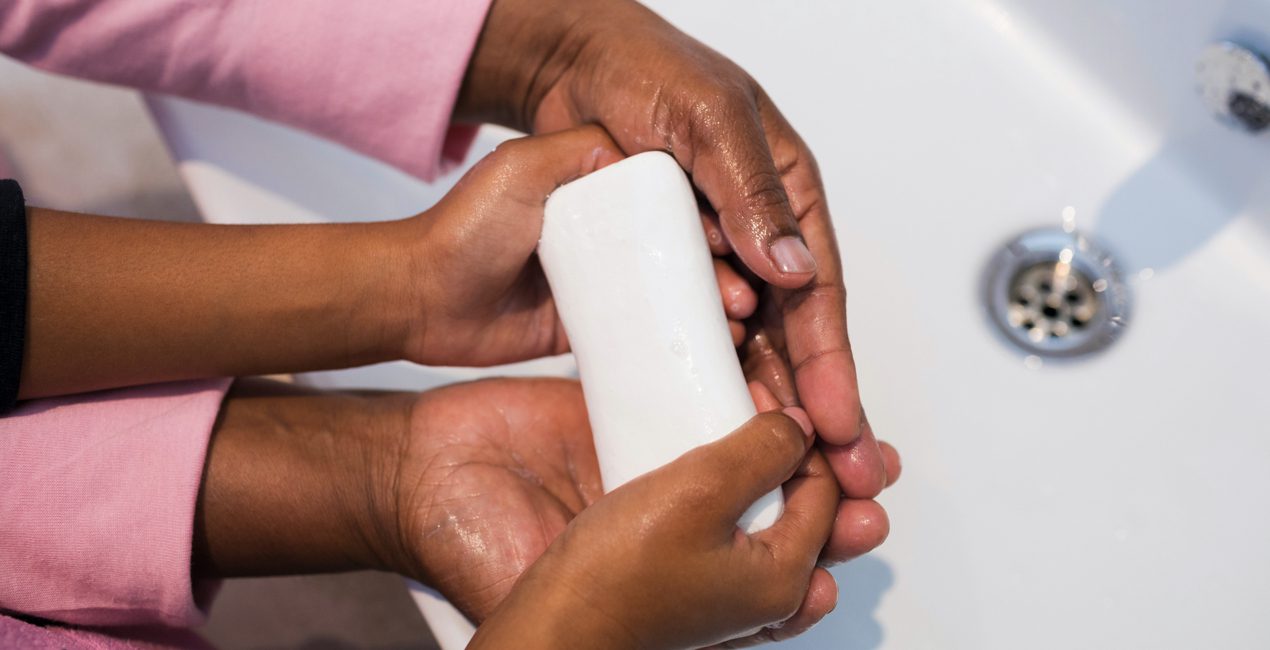7 Ways to Support Kids and Teens Through the Coronavirus Pandemic

Posted in: Hot Topics
Topics: Hot Topics
You can also read this article in Spanish or Chinese. Gratitude to the MGH Chelsea Healthcare Center and the MGH International Marketing Team for making this possible.
The outbreak of the COVID-19 has created anxiety and uncertainty for all of us, including children and teens. During stressful times, no matter what their age, children want to know three basic things:
- Am I safe?
- Are you, the people caring for me, safe?
- How will this situation affect my daily life?
As parents and caregivers, we need to talk with our kids about COVID-19 to address these concerns. Below are seven tips on how to engage with kids of all ages to help them maintain emotional stability during the crisis, followed by guidance on how to tailor conversations for kids at of different ages.
Guidance for Helping Kids of All Ages
1. Control Your Own Anxiety
Many of us are worried about the current situation and living with uncertainty isn’t easy. Yet, anxiety is “contagious.” Your kids will know that you are nervous even if you try to hide it. So how can you keep your cool, despite your own worries? Here are some things that may help:
- Get the most credible information you can. Focus on fact-based, helpful information about the virus. Avoid endless social media streams, which can be filled with misinformation, and constant breaking news headlines, which can fuel your concerns. Stay up to date with notices from your child’s school, your state, and your city or town. Anxiety is best contained if you know the guidelines for protecting you and your loved ones, including hand washing, cleaning surfaces, use of sanitizers, whether you or your family need to be in isolation, and what supplies you should have at home in case you are quarantined.
- Talk with folks who support you. This could be your partner, a parent, a friend, a spiritual leader, or another trusted adult you can confide in.
- Take care of your physical health. Get a good amount of sleep and exercise and use other ways to reduce anxiety, such as meditation, yoga, listening to music, or watching a TV show.
- If your child asks if you are worried, be honest! They will know if you are not telling them the truth. You can say things like: “Yes, I’m worried about the virus, but I know that there are ways to prevent its spread and take care of the family if one of us gets sick.”
2. Approach Your Kids and Ask What They Know
Most children will have heard about COVID-19, particularly school-age kids and adolescents. They may have read things online, seen something on TV, or heard friends or teachers talk about the illness. Others may have overheard you talking about it. There is a lot of misinformation out there, so don’t assume that they know specifics about the situation or that the information they have is correct. Ask open ended questions:
- What have you heard about the coronavirus?
- Where did you hear about it?
- What are your major concerns or worries?
- Do you have any questions I can help you answer?
- How are you feeling about the Coronavirus?
Once you know what information they have and what they’re concerned about, then you can help to fill in any necessary gaps.
3. Validate Their Feelings and Concerns
Kids may have all sorts of reactions to the COVID-19. Some may be realistic, while others exaggerated. For example, if grandma is in a nursing home, they may have heard that older adults get sicker than healthier, younger individuals. You need to be able to acknowledge this valid concern, but can reassure them that grandma has the best medical care to manage the illness. Alternately, a child may be terrified that animals will get the virus such as a beloved pet. Again, take these feeling seriously, but then reassure them. We can treat pets as we would other human family members to protect them from a possible infection.
4. Be Available for Questions and Provide New Information
This outbreak is likely to last a long time, so one conversation won’t be enough. At first, your child’s emotional reactions will outweigh their thoughts and concerns. As the outbreak continues and your kids get new information, they will need to talk again. Let them know they can come to you at any time with questions or worries. It’s also a good idea to have regular check ins, as they may not approach you with their fears.
When you update your kids with new information, don’t assume that they fully understand everything you say. Ask them to explain things back to you in their own language. This is an excellent way to know if your kids understood what you meant.
5. Empower Them by Modeling Behavior
An important part of prevention is hand washing, coughing or sneezing into your sleeves, wiping your nose with tissue then discarding it, trying to keep your hands away from your face, not shaking hands or making physical contact with others, and wiping surfaces with material that is at least 60% alcohol.
Be sure to demonstrate these behaviors first, so your kids can have a good model. It’s a great idea for you to wash your hands with young children singing “Happy Birthday” twice (about 20 seconds) so they know what to do on their own. Wiping surfaces as a family, after dinner, helps everyone feel part of the prevention effort. For older kids and teens, give alternatives to high fives or fist bumps, like elbow bumping, bowing, or using Mr. Spock’s “live long and prosper” Vulcan salute.
When you see your kids practicing good hygiene praise them for it! Reinforce that they are not only taking care of themselves, but also helping to prevent the spread of germs to others.
6. Provide Reassurance
Your kids may worry about how you’re going to get through this. Remind them of other situations in which they felt helpless and scared. Kids love family stories, and these narratives carry a lot of emotional weight. Try something like: “Remember that hurricane when a tree fell on the apartment?” or “Remember when the pipes burst in the house and we were flooded?” Remind them that you have been through challenging times before, and though everyone was distressed, everyone also worked together and got through it. Reliving these kinds of narrative helps the whole family to build resilience and hope.
7. Don’t Blame Others
In stressful times, when we feel helpless, there’s a tendency to blame someone or become more fearful, even when there is no evidence to support these reactions. This can create social stigma and be harmful towards certain groups of people – in the case of COVID-19, particularly people of Asian descent, and people who have recently traveled. The last thing we want our kids to do when frightening events happen is to cast blame on others, either intentionally or without meaning to.
When you ask your kids what they know about the virus, listen for anything that discriminates against a group of people, and address it in your conversation. And make sure not to reinforce negative stereotypes in your own actions and conversations.
Guidance for Kids By Developmental Level
When you talk to your child or teen, it’s important to use words, phrases, and examples that are developmentally appropriate. Here are tips for helping preschool kids, school-age kids, and teens and young adults.
Preschool Kids (Ages 2- 6):
Preschool kids are more in tune to and affected by parental emotions than older kids. For them, especially, be sure to stay calm around them. In addition:
- Turn off the TV, computers, smart speakers when they are around. They will hear things or see images that are potentially scary.
- Be careful in talking about the situation with other adults or older siblings around them.
- Younger kids may need a bit more TLC and cuddles than older kids. If you’re concerned about transmitting illness, then sitting close, or perhaps sleeping in the same room is comforting.
- Make preventive measures such as washing hands or wiping surfaces a playful game.
School-age Children (Ages 7-12):
- Kids in first to sixth grade can understand more about a contagious disease. Explain that the germs causing COVID-19 are like ones that cause a cold. Remind them that these illnesses can spread easily, but that they can also be prevented, which is why we need to wash our hands, use tissues, and use alcohol wipes.
- Kids this age thrive on routine. Try to keep to daily schedules as typical as always, even if you are quarantined at home. Explain that the reason you stocked up on a month’s supply of food and are not going to school or work is to help your community by not spreading the disease to others.
- Younger school-age kids cope with their fears through play. They may play doctor or use a Lego set to create a hospital helping people. This is a normal way for them to manage their anxieties including repeating their games over and over.
- Some school-age kids will become more clingy and demanding. Such “regression” is a way of expressing fear. This is not the time to simply tell them to “grow up,” even if the behavior is frustrating. They may need more time with you – reading to them, watching a TV show together, drawing, or playing.
- Turn off the TV other digital media as much as possible. School-age kids may not understand everything they hear and see on the screen. For example, if there are reports of outbreaks or deaths on the other side of the country, they may not know how far this is or that germs cannot spread to their house from distant places.
Adolescents and Young Adults (Ages 13 – 18+):
- Teens and young adults have likely heard a lot about COVID-19 and its potential danger. They are old enough to understand how it spreads, preventative measures, and future risks. Have open conversations, beginning with open-ended questions about what they know, what they are worried about, and how they are feeling.
- Kids this age are mature enough to watch the news with you or go online and explore trusted sites to learn more about the disease. Sit with them while viewing and have conversations about what they see and read, and how the illness may impact their lives.
- Teens and young adults may be help you shop for supplies, play with younger siblings, prepare meals, and do other tasks to prepare for possible quarantine. Including them in the effort to protect the family helps them feel valued, and this empowerment lessens anxiety.
No one knows at this point how serious the impact of COVID-19 will be. Living with uncertainty is not easy. However, we can help each other become more resilient, emotionally stable, and as physically protected as possible through a carefully planned means of engaging with our kids in this time of crisis.
Last updated 18 February 2021

 Share
Share Tweet
Tweet




